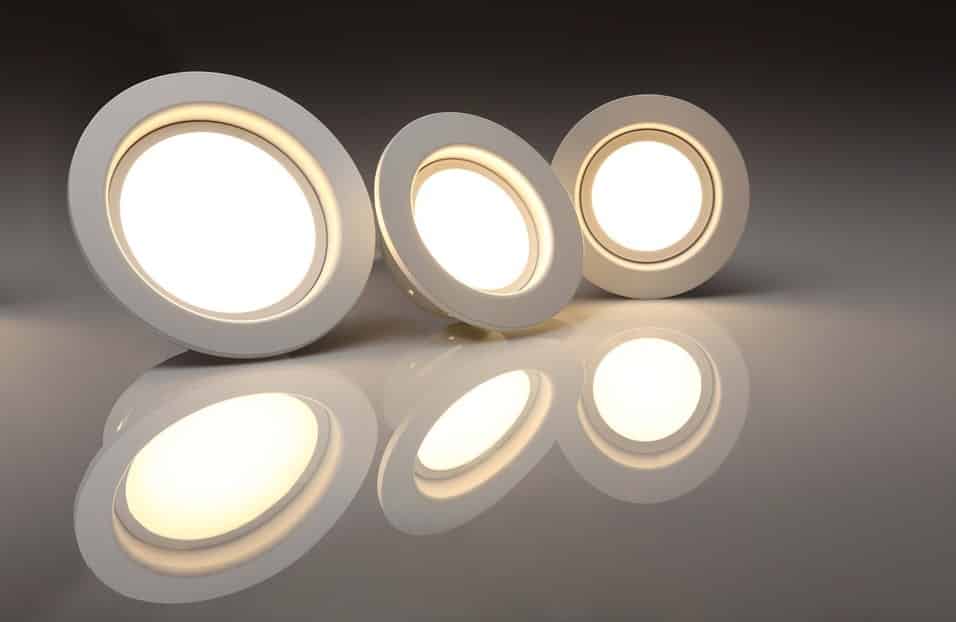You have probably heard of LED lighting or LED appliances. The buzz around this technology may push you to curiosity over what makes them stand out from other forms of lighting. Lights based on Light Emitting Diode technology are at the forefront of this industry, given their extremely efficient nature. These innovative lights operate in a manner much different from that of the usual bulbs. They are more durable, powerful and will save you a lot on energy bills when compared to the normal fluorescent or incandescent bulbs traditionally used at home or in the office. People worldwide are making the shift to LED lighting. This article gives some insights and an overview of some of the benefits of LED lighting.
Energy efficient
LED lighting sets itself apart from other lighting technologies due to its energy-saving nature. Experts say that one of the biggest advantages of LED lights is that they can save you up to 90% in energy costs. Compare that to incandescent lights or fluorescent lighting which have established reputations for running up power bills. This difference is extremely vast and realizable, especially over the long-term. Energy bills can put quite a dent in your wallet, and LEDs are an easy solution for helping you reduce your energy expenses. With LEDs you will avoid unnecessary costs in terms of repair, replacement, and maintenance, which often accompany other lighting technologies.
Long life expectancy
LED manufacturers have shown these lights are able to clock over 60,000 hours of lighting time. This means you can go years without worrying about changing your lighting. This extended lifespan outpaces the 1500 hours that incandescent bulbs offer by a long shot. If properly used and maintained, quality LED lighting can guarantee you up to 7 years of consistent service before having to replace them. LEDs typically offer a lifespan at least ten times longer than even small fluorescent bulbs.
Sturdy and resilient
The diodes on an LED light are made from semiconductor material in the place of the neon gases or light filaments that you would find in ordinary bulbs. This design places them in the category of solid express lighting devices. This design is believed to make them far more resilient in comparison to normal light bulbs. These lights are typically small chips used to make up a much larger structural enclosure. This resilient design, in huge part, contributes to the longevity and performance of these devices. Consequently, LEDs can withstand more difficult conditions and last longer than traditional lighting.
LEDs have impeccable safety
Compared to other lighting methods, LED lighting tends to be extremely safe. While many people focus on costs and durability, this can be an easily overlooked feature. While running, these lights remain extremely cool and may even be touched without consequence. They can even remain cool after long hours of steady running, meaning they have little chance of causing heat related accidents. Being able to run that long without issue makes them ideal for people in need of lighting for long periods. This also contributes to their energy-saving as they do not need to expel the heat that they generate. Compared to other sources of lighting, LEDs have been proven to have the lowest risk factor in terms of causing fires or burns.
LEDs are an environmentally friendly solution
Experts believe that LED lighting is one of the most environmentally safe lighting options available today. Manufacturers are able to make use of safe and non-toxic material in their production while other forms of lighting make use of potentially hazardous materials. Neon lights, for example, are designed to have mercury in them. Most manufacturers try to make their devices extremely recyclable and environmentally friendly to stay competitive in today’s more eco-conscious marketplace.
Color variations
With LED lights, it is possible to get lighting in many different colors. These lights can even be designed to give off numerous different colors on the same device. The most common base colors for these lights include blue, red and amber. Many manufacturers provide LEDs that can deliver these varied colorations, and even offer smart options where you can control your lights and colors from your phone or tablet. To achieve similar color effects with other lighting like incandescent bulbs would require the use of cumbersome filters.
Versatility
LED lighting is being used for multiple applications across multiple platforms and industries. They are being used by automotive manufacturers, in residential applications, military applications, transportation, electrical appliances and more. They can be used for night lights, spotlights, vehicle accessory lights, reading lamps and sign lighting. LED lights are so versatile that it’s making product designers think of new ways that lighting can be utilized in products of all types.
Next phase of technology
Both residential and commercial applications are fast adopting this technology due to the many advantages of LED lights. In time LEDs are likely to phase out the retro technologies as LEDs continue to improve and the costs continue to decrease. Amazingly, even with the many existing benefits of LED lighting, there continue to be more innovations in terms of creating brighter, more resilient, and more energy-efficient lighting products.
Conclusion
LED lights have vast benefits over the many available alternatives. If you haven’t made the switch to LED lighting you’re missing out on a long list of benefits. LEDs are safe, powerful, resilient, long-lasting, eco-friendly and can be applied to applications as far and wide as you care to imagine. If you have more questions about LED lighting, check out our LED lighting FAQ.

